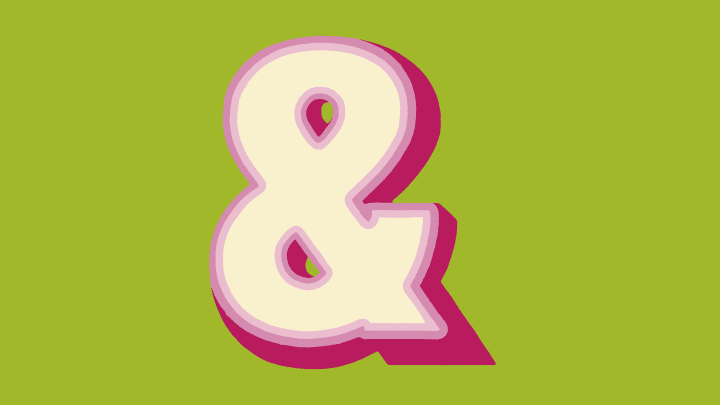Where Did the Ampersand Symbol Come From?

The symbol we know as the ampersand can be traced as far back as some graffiti on a Pompeian wall around the 1st century CE. It wasn’t called an ampersand at the time—it was just a ligature of the cursive letters e and t forming the Latin word et, which means “and.” (This is why etc. is sometimes written &c.)
At first, & had competition for use, as shorthand et—the “Tironian et” (⁊)—is said to have been created maybe a hundred years before as part of Cicero’s secretary Tiro’s extensive shorthand system, the notae Tironianae. Although it persisted into the Middle Ages, eventually the entire notae Tironianae fell out of use, leaving & to evolve and spread along with the language.
By the early 19th century, & was often treated as the 27th letter in the alphabet, coming right after z. Without a title yet, it was still read as just and, which made reciting the end of the alphabet a little confusing—x, y, z, and and. Kids started inserting the phrase and per se and to distinguish it, and over time, this all got blended together to sound more and more like ampersand.
The mondegreen name for the centuries-old symbol first appeared in the 1790s. More than 200 years later, this little piece of punctuation has got a whole day—September 8—dedicated to celebrating its history and continued use.
A version of this story ran in 2018; it has been updated for 2023. Have you got a Big Question you’d like us to answer? If so, let us know by emailing us at bigquestions@mentalfloss.com.
Are you a logophile? Do you want to learn unusual words and old-timey slang to make conversation more interesting, or discover fascinating tidbits about the origins of everyday phrases? Then pick up our new book, The Curious Compendium of Wonderful Words: A Miscellany of Obscure Terms, Bizarre Phrases, & Surprising Etymologies, out June 6! You can pre-order your copy on Amazon, Barnes & Noble, Books-A-Million, or Bookshop.org.